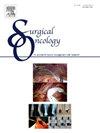Comparative efficacy, safety, and oncological outcomes of percutaneous thermal and chemical ablation modalities for recurrent metastatic cervical lymphadenopathy from thyroid cancer
IF 2.4
4区 医学
Q3 ONCOLOGY
引用次数: 0
Abstract
Background
Thermal and chemical ablation techniques may consolidate recurrent metastatic cervical lymph nodes as alternatives to repeat neck dissection in thyroid cancer patients. This meta-analysis aims to compare the efficacy and safety across modalities.
Methods
Four databases were searched for studies on radiofrequency (RFA), microwave (MWA), laser (LA), and ethanol ablation (EA) treating metastatic cervical nodes from thyroid cancer. The outcomes analyzed included treatment response, oncologic control, and complications. Random effects meta-analytical pooling was conducted.
Results
There were 25 studies (n = 1061 nodes) examining the four ablation methods. Patients showed comparable baseline characteristics and initial lymph node sizes ranging from 0.96 to 1.28 cm. All modalities achieved substantial node volume reduction (88.4 %) and disappearance (62.8 %), with significant biochemical decline (from 6.01 to 1.13 ng/ml, p = 0.18 between groups). MWA showed the highest volume reduction (99.4 %) and disappearance rate (87.6 %) versus slower efficacy of RFA (93.0 %, 72.1 %), LA (77.9 %, 62.5 %), and EA (81.8 %, 58.4 %). New malignancy/metastases risks ranged from 0.03 % to 1.3 % without between-group differences (p = 0.52). Major complications were absent; transient voice changes (0.05%–10.6 %) and neck pain (0.0%–5.9 %) were the main overall complaints. However, overall complication rates significantly varied by modality (1.1%–10.6 %; p = 0.003).
Conclusions
Thermal and chemical ablation is effective in controlling the metastatic disease burden in patients with thyroid cancer, offering a potentially less morbid and non-surgical alternative to re-operation. Additional prospective data could confirm the long-term equivalent of revision neck dissection and stratify patients based on concomitant Hashimoto's and genomic mutations. Clarifying optimal patient selection and standardizing prognostic indexing could further enhance utilization.
经皮热消融和化学消融治疗甲状腺癌复发性转移性宫颈淋巴结病的疗效、安全性和肿瘤学结果的比较
背景:热消融和化学消融技术可以巩固复发转移性颈部淋巴结,作为甲状腺癌患者重复颈部清扫的替代方法。本荟萃分析旨在比较不同治疗方式的疗效和安全性。方法:检索四个数据库,检索射频(RFA)、微波(MWA)、激光(LA)和乙醇消融(EA)治疗甲状腺癌转移性宫颈淋巴结的研究。结果分析包括治疗反应、肿瘤控制和并发症。随机效应荟萃分析池化。结果:有25项研究(n = 1061个淋巴结)检查了四种消融方法。患者表现出相似的基线特征,初始淋巴结大小从0.96到1.28厘米不等。所有治疗方式均可使淋巴结体积显著减小(88.4%)和消失(62.8%),生化指标显著下降(从6.01至1.13 ng/ml,组间p = 0.18)。MWA表现出最高的体积缩小率(99.4%)和消失率(87.6%),而RFA (93.0%, 72.1%), LA(77.9%, 62.5%)和EA(81.8%, 58.4%)的疗效较慢。新发恶性/转移风险从0.03%到1.3%不等,组间无差异(p = 0.52)。无主要并发症;短暂的声音变化(0.05% ~ 10.6%)和颈部疼痛(0.0% ~ 5.9%)是主要的主诉。然而,不同手术方式的总并发症发生率显著不同(1.1%- 10.6%;p = 0.003)。结论:热化学消融可有效控制甲状腺癌患者的转移性疾病负担,为再次手术提供了一种潜在的低发病率和非手术替代方案。额外的前瞻性数据可以证实翻修颈部清扫的长期等效性,并根据伴随的桥本氏症和基因组突变对患者进行分层。明确最佳患者选择和规范预后指标可进一步提高利用率。
本文章由计算机程序翻译,如有差异,请以英文原文为准。
求助全文
约1分钟内获得全文
求助全文
来源期刊

Surgical Oncology-Oxford
医学-外科
CiteScore
4.50
自引率
0.00%
发文量
169
审稿时长
38 days
期刊介绍:
Surgical Oncology is a peer reviewed journal publishing review articles that contribute to the advancement of knowledge in surgical oncology and related fields of interest. Articles represent a spectrum of current technology in oncology research as well as those concerning clinical trials, surgical technique, methods of investigation and patient evaluation. Surgical Oncology publishes comprehensive Reviews that examine individual topics in considerable detail, in addition to editorials and commentaries which focus on selected papers. The journal also publishes special issues which explore topics of interest to surgical oncologists in great detail - outlining recent advancements and providing readers with the most up to date information.
 求助内容:
求助内容: 应助结果提醒方式:
应助结果提醒方式:


